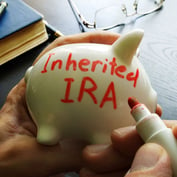When your client dies, there are nine ways his or her assets can be passed on to heirs.
When an individual dies, every piece of property owned by that deceased individual must be transferred to a new owner. Both real property and personal property (tangible and intangible) can pass to the decedent’s heirs in a number of ways. Property can take on many forms, such as shares of a closely held business (i.e., corporation, limited liability company, partnership), real estate, bank accounts, stocks, bonds, mutual funds, life insurance, annuities, qualified retirement plans (401(k)s, profit sharing, SEP, defined benefit), IRAs, Roth IRAs, 403(b) plans, 457(b) plans, non-qualified deferred compensation plans, notes and loans receivable, stock options, collectibles, jewelry, cash, etc.
Being able to discuss the post-death transfer of all types of property with your clients can give you an edge as a trusted professional advisor. Many clients are under the mistaken impression that all their property will pass under the terms of their wills. Nothing could be further from the truth. Each and every piece of property owned by a client at death must be inventoried, valued, and distributed according to the property transfer laws of descent and distribution.
Nine ways property can be legally transferred at death:
1) Intestate: Property owned in a sole name (individually) is considered probate property and will pass according to statutory state intestacy law when there is no will. The final distribution must be approved by the Probate Court.
2) Will: Property owned in a sole name (individually) is considered probate property and will pass to heirs according to specific directions in a legally executed will. The final distribution must be approved by the Probate Court.
3) Living Trust: The trust may be revocable or irrevocable. A revocable living trust automatically becomes irrevocable upon the death of the grantor. Property owned in the legal name of the trustee passes to trust beneficiaries according to the terms of the trust. The remaining beneficiaries of the trust may be individuals or another trust. Property owned by a living trust will not be subject to probate.
4) Testamentary Trust: Property owned in a sole name (individually) first passes through the will, and then into the trust by specific language in the will. The remaining beneficiaries of the trust may be individuals or another trust. The property passing through the will is probate property and the final distribution to the testamentary trust must be approved by the Probate Court.
5) Contract in Lifetime: A classic example of a contract in lifetime is a buy-sell business transfer agreement. At the death of a business owner, the shares of the business are purchased from the estate by a third party (i.e., corporation or surviving shareholder). This transaction will not be subject to probate.
Another good example is a contingent-owner designation of a third-party-owned life insurance policy. Upon the death of the policy owner while the insured is still alive, the ownership of the policy will automatically transfer to the contingent owner and will not be subject to probate.








 November 30, 2012 at 07:00 PM
November 30, 2012 at 07:00 PM











